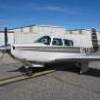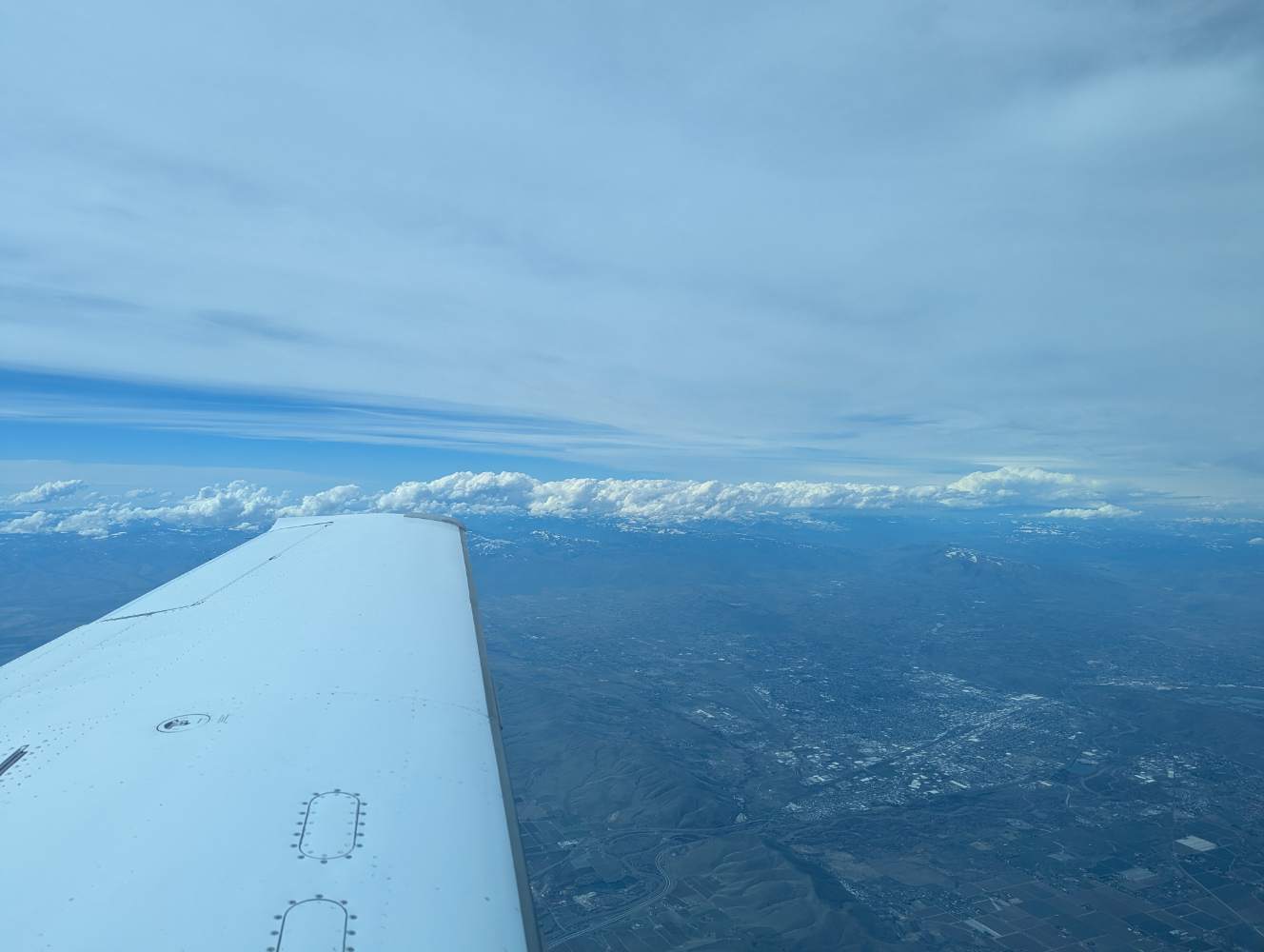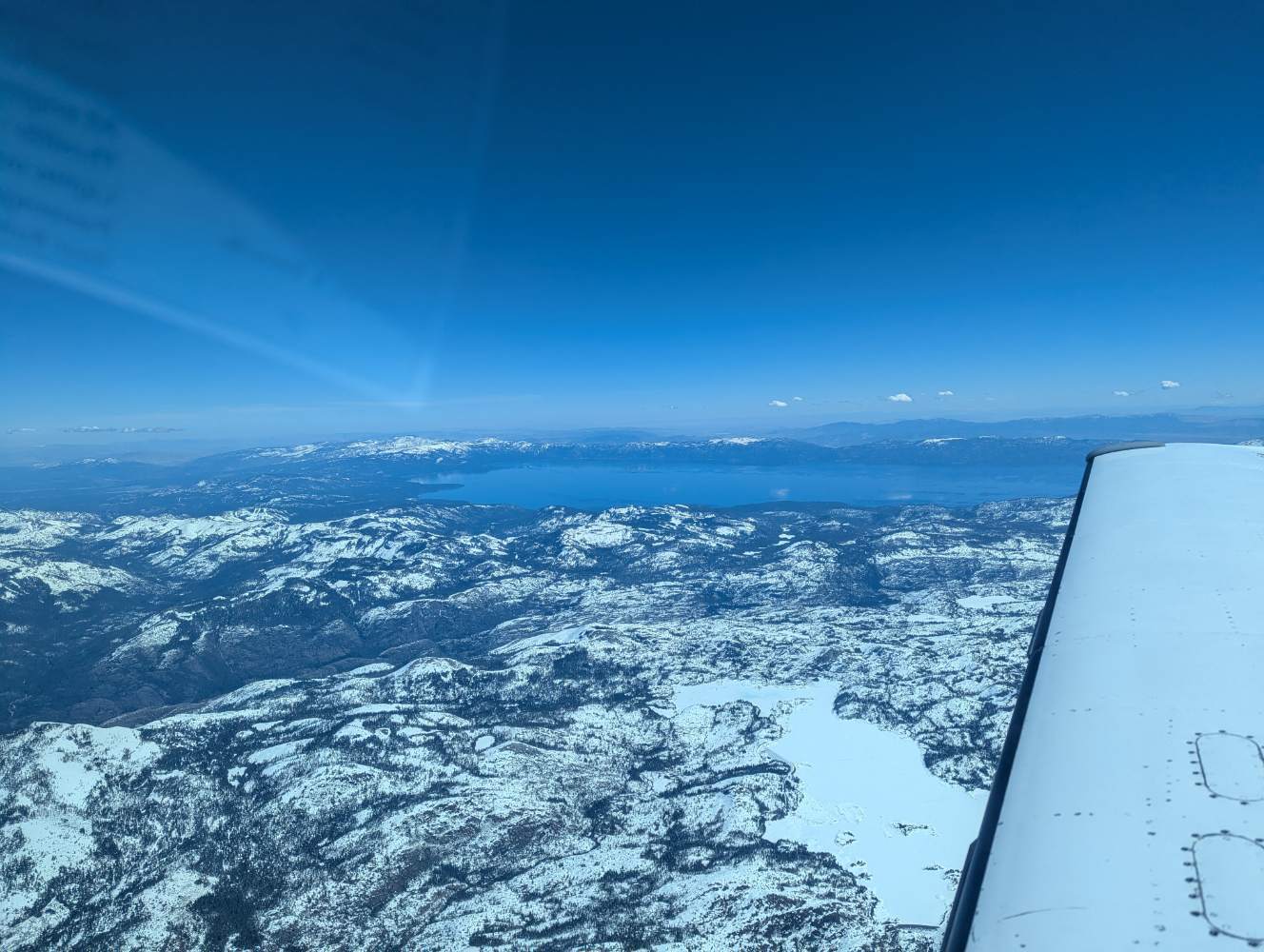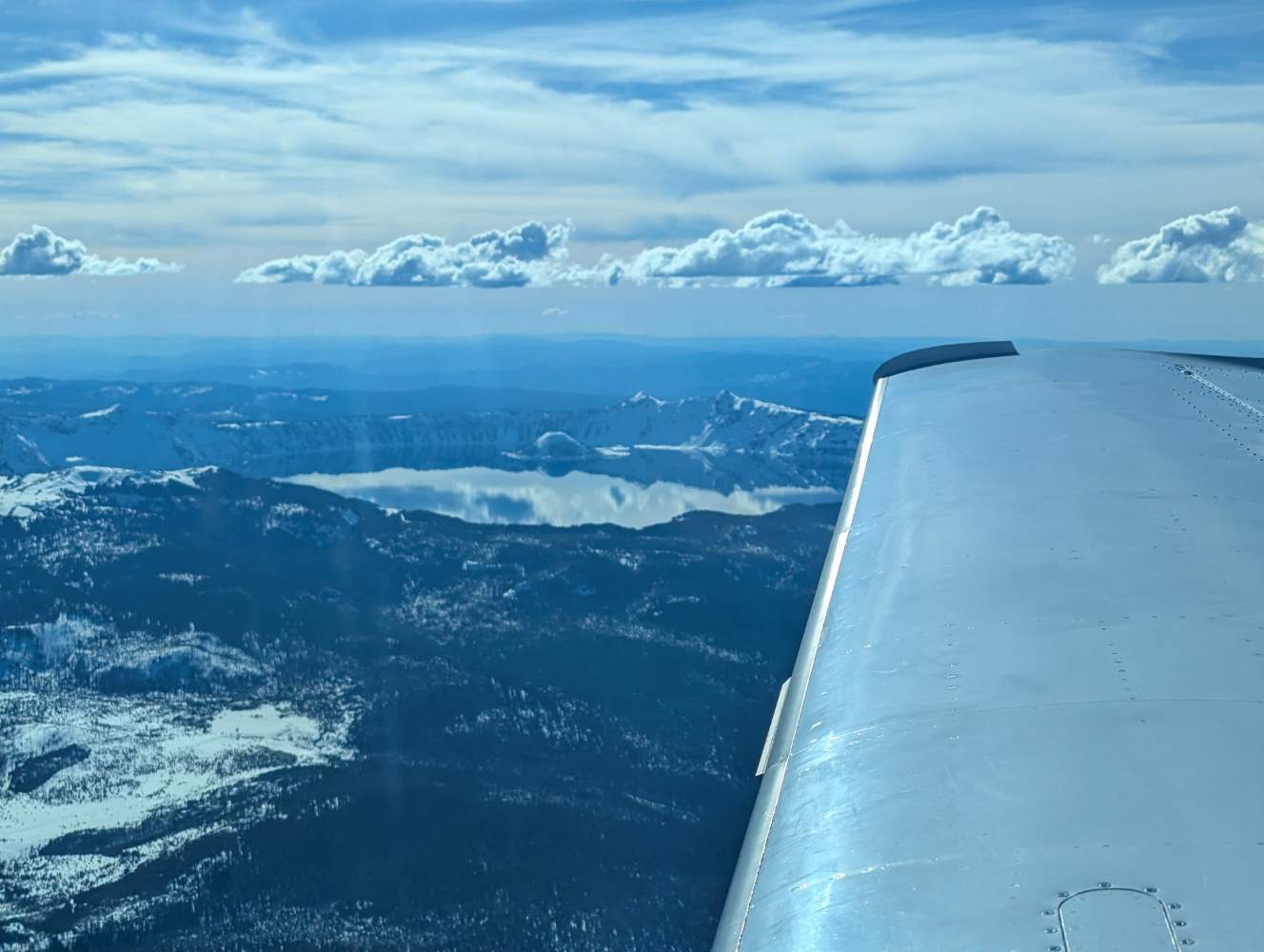-
Posts
839 -
Joined
-
Last visited
-
Days Won
4
Content Type
Profiles
Forums
Blogs
Gallery
Downloads
Events
Store
Everything posted by wombat
-
I just got my quote: $1M / $100k per passenger Hull value: $250k There is an open pilot clause (Although I forget the hours requirements) but I'm the only named pilot. $4,063 ($4,468 if I increase the per passenger to $250k)
-

Debriefing after possible ATC blunder today
wombat replied to DXB's topic in Mooney Safety & Accident Discussion
By 'timing' I mean timing on the controller's part... They might have thought you had not yet crossed the approach course even though you actually had crossed it already. And then they didn't check that they'd actually given you the instruction before crossing the course, they just gave you their pre-planned heading and moved on with their lives. And for the speed thing, I was making a joke... You were (I assume!) flying a Mooney, so of course you were going super fast! All Mooneys are fast! Rocket or a C. But seriously they could have assumed you were in a 172 or a 152 and mentally assigned you 90 knots or something. But it's probably more like "Oh, they are a light GA plane, they'll reach the final approach course in about 90 seconds from where they are on my screen" but they were just wrong. I do think the sharp intercept angle is a serious bad on their part. Although when looking at the ground track, that doesn't look like a 60 degree intercept. What were the winds doing? That could kind of explain all of this; if winds at your altitude were strong from the SE that would have pushed you across final before they were ready for you and could explain why they gave you such a sharp intercept angle. Just took a piece of paper and folded it to 45 degrees, and that almost exactly matches up with the intercept angle on your screenshot, not 60 degrees. There is no question in my mind that the controllers messed up. They gave you an intercept that didn't work. I'm assuming that you didn't take like 30 seconds to start the turn because if they'd given you that heading 30 seconds earlier it would have worked. To more gracefully handle situations like this, maybe pay more attention to when you cross final and consider (really: just think about it, not necessarily do it) telling them when you've flown through the final approach course. "Philly Approach, Mooney 12345 passing through final approach course." But you did say that particular controller had 'attitude'. So that might hurt more than help. But also that mental cue might help you recognize sooner that the heading they gave you won't get you back to the track you want to fly. -
I'm curious... what are you cutting with? Plasma? Laser? End mill? Water?
-

Debriefing after possible ATC blunder today
wombat replied to DXB's topic in Mooney Safety & Accident Discussion
Perhaps the original problem isn't a math problem on the controller's part, it's a timing problem. They could have been waiting for something before giving you that final turn and clearing you for the approach. Maybe for another aircraft to pass the MAP or maybe for the end of the episode of Ren And Stimpy or whatever. Doesn't matter. They expected you to still be to the right of the final approach course and gave you a heading that would work in that case, but you had already flown past it so the heading they gave you no longer worked. The Seattle Approach controllers fly me through the final approach course fairly often when I am on the approach to Boeing Field (KBFI). Then I have to get a much larger turn to re-intercept. The underlying problem here is that you were flying too fast! If you'd been 10Kt slower, you would have been to the right of the approach course when they gave you that last turn. What speed mods have you done? Did you get the PowerFlow exhaust? Did you leave your ram air door open? Al Mooney strikes again!! -
The fastest I saw was 259KT ground speed but 250 was closer to average for the highest tailwind portion. https://www.flightaware.com/live/flight/N5773S/history/20250326/1755Z/KSMX/S35 ATC called at one point to ask what my tailwind was. I should have told them "It's a 30 knot headwind, but I did just install a PowerFlow exhaust!" But I didn't think that quickly.
-
Just got my annual finished. Flew down to Santa Maria to Artcraft Paint to have them take a look at the plane. Chances are pretty good I'll be taking it to them this fall for a full repaint and interior. Some pictures: Some buildups over the Cascades on the return trip today (26 March). They'd been predicting 1/2" hail, but unless something drastic changes I don't see those clouds producing anything that wild. I had a tailwind of up to 60 knots on the return trip at 16,000'. Lake Tahoe on the way North today, from 16,000' Sunset over the low clouds over the ocean on Tuesday evening. (24 March) (OVC 800 at SMX so it was an instrument approach and landing with a tailwind because the other runways have too high of minimums and the circling approach mins are 800'... And I'm not about to do my first circling approach in 7 years in the dark right at minimums) Crater Lake from Tuesday afternoon (25 March):
-
Does the G500 really have to be a TXi or can it be a 'classic' G500? Not really important to me at the moment, but I've got a classic G500 and if I ever want to change to the GFC500 autopilot, a new G500TXi would add $20k to the install bill.
-
Does anyone here know what the tolerances are on placement?
-
I just heard from the Baja Bush Pilots that Mexico no longer is issuing a flight plan to any private airport in Mexico that is not listed as a Third Party port. There are only four of these airports in Mexico. To see more, click here To read the AFAC circular, click here.
-
-
@mooneygirl recently did a presentation at the Pacific Northwest Aviation Conference & Trade Show that focused on psychology and personal minimums. I bet she's got plenty to add to a thread like this.
-
I'm on a 2701' runway (2501' because of displaced threshold on runway 28) at 1602' elevation and in my Rocket if I want to roll down to the end I barely use the brakes at all. The airport is usually very un-busy, so I don't mind rolling down a little farther and taxiing back to the mid-field turnoff. Sometimes I try to make the taxiway (1,250 from one end, 1050 from the other) and if I do that I'm burning up the brakes. And tires.
-
As many have said, if you are using an iPad, if you want the GPS chip you have to get the cellular version. But that doesn't mean you have to get cellular service. I don't have cell service on my cell-enabled iPad mini. I'm glad to have the GPS in it for when my Stratux has been forgotten. When I need to update I connect to WiFi. From my phone, or home, or hangar, or whatever.
-
Well, you can't install anything without the correct tray, or wiring. But a KT-76A with tray and wiring can be had pretty cheap. If you have some local airport friends they might give you one for free. There is a KT-76A tray and wiring on ebay right now for $75. So this is probably just a couple of hours of work to make the thing operational.
-
Meh.... I think there are scenarios where tossing in another old one makes sense. Not many... If you are planning an upgrade to a transponder that you can't use now (say a GTX-345R remote transponder) but don't want to install the GTN-750 right now. Or if you already have the KT-76A and plenty of spares for it, and the labor to do the install is cheap. But maybe I'm making excuses because I nearly did the same thing. I didn't end up doing it, but was pretty close. Yes, the pinouts between the two transponders (KT76 and KT76A) are different. Annoying. I don't know if they are physically compatible, but I do know they are not plug and play. I was able to upgrade to a Garmin GTX-327 with very minimal effort. I think it was a total of about 20 pins that I had to make. I'm really glad I did that.
-
I built my own ground power unit like this guy did. It works great and I don't mind leaving the power on for a few hours while I mess with avionics.
-
My engine (TSIO520-NB) has the opposite problem. As I climb, the MP increases slightly. Maybe 1" per 5,000' of altitude gained.
-
Based on the data in the pictures @201er posted, if we just use 2022, the nonfatal rate per 100k hours is 4.84 for non-commercial and 1.52 for non-commercial. Commercial is 31.4% of the rate of non-commercial. For fatal it's .79 and .22, or 27.8% In order to have a 30X ratio between the two for single engine piston, I think we'd have to have an inverse ratio (Commercial is more dangerous) for multi-engine and non-piston aircraft. So I'm kind of questioning the 30X
-
Yes, they do some dumb things. But at a much lower rate than us amateurs. Well, at about 1/3 of the rate. I'm just estimating 1/3 based on a few of the numbers that I just mentally estimated ratios with from the graphs that @201er posted.
-
That's not showing what I'm trying to discuss. The accident rate combines the different aircraft classes of non-commercial fixed wing and my theory is that the change in relative hours flown by the different classes is causing the overall decrease, with the relative accident rate within each class remaining roughly the same.
-
https://www.automatesystems.co.uk/road-blockers/ I'm 90% joking but for the 10% that isn't.... Let's think about the cost of installing these in 100 of the intersections that are estimated(1) to be most likely to have a dangerous runway incursion. I'll guess each install will be about $5 million to $10 million, not counting the planning, permitting, and loss of revenue due to the runway entrance being inop during the install. An additional $50m for systems and software updates per airport where these are going to be installed. Let's estimate 10 airports in the US would get a system. An additional $100k per year for each one for maintenance. Motors, hinges, sensors, wiring, etc. Since they will potentially damage aircraft through inadvertent deployment, let's add $50k each per year for insurance. How much actual loss has occurred due to runway incursions at these 'worst' 100 intersections in the last 25 years in the US? As far as I can tell(2) $0 There were 4 accidents in the US in the 90's, and 1 in the 80's. I'm sure there have been many close calls, but nothing notable. While we often hate to think of it this way, is this proposed expense ($1.25 billion initial outlay plus $15 million annually) a good deal compared that to an expected payout per passenger(3) of less than $5 million? Not if you look at the current system and its realized risk profile. Yes, we've had some close calls, but things like a go-around are part of the current system and they have been working. 1: We can spend maybe 10 million dollars to do a study to determine this. 2: https://en.wikipedia.org/wiki/Runway_incursion 3: https://www.iii.org/article/airplane-liability#:~:text=Among airlines based in modern,%24700 million to nearly %241.3
-
I was thinking about just the flights that are part 91 since the discussion is about part 91 safety. But maybe some of the aircraft are also flown as part 135 and the flights they do under part 91 benefit from part 135 requirements in training and maintenance.
-
I was trying to list the underlying reasons that having flying the plane as a job would make you a safer pilot. More recent experience, more/better training, age, and time spent planning the flights.
-
I wonder if the GA rate decline is largely due to the changing ratio of 'bugsmashers' like ours to jet traffic like Taylor Swift's. If there was an 'hours flown' by model I think we could figure it out. To make it clear, I think the accident rate is higher for single engine piston planes than for multi-engine turbines even within part 91. Just thinking out loud, here are some of the factors I think make the ratio Bugsmasher pilots tend to fly bugsmashers for recreation or personal pleasure and their recent time spent practicing is lower. Turbine/Jet pilots more often have specific periodic paid training requirements (Type certificates, recurrent training for insurance, etc) Bugsmasher pilots and aircraft tend to be significantly older. Turbine/Jet pilots will more often have two pilots in the cockpit with dedicated tasks. Bugsmasher pilots don't perform as thorough of flight planning nor is their maintenance as effective.
-
Oh, I know all about the complaints. I've responded to many of the complaints the same way I'm responding to yours. Bottom line: There is no plausible and reasonable explanation for taking the risk of flying single engine piston GA at all. It sounds like you are saying that anyone that takes more risks than you has 'no plausible and reasonable explanation for the risk' they are taking. But you have also not provided any plausible and reasonable explanation for why you are taking the risks you do choose to take in flying a single engine piston airplane at all or anything to explain why single-engine piston airplanes the way you fly is reasonable and the way others fly is not. You are sounding more and more like the "anyone driving slower than me is an idiot, anyone driving faster than me is a maniac" type of person here. Personally I fly because I want to. It's a choice that I make based on the costs and benefits to me given the environment I live in. It's not a good decision in terms of a plausible and reasonable choice other than my pleasure in doing the things I want to in my life.









